Day 3-Montana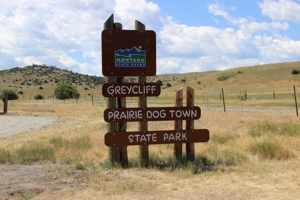 We stopped off at Greycliff Prairie Dog Town State Park and saw, yes, you guessed it, many prairie dogs but no rangers. I guess the dogs trusted that we had a state park pass. We saw LOTS of the little guys and also listened to them make squeaky, chirpy warning sounds.
We stopped off at Greycliff Prairie Dog Town State Park and saw, yes, you guessed it, many prairie dogs but no rangers. I guess the dogs trusted that we had a state park pass. We saw LOTS of the little guys and also listened to them make squeaky, chirpy warning sounds. 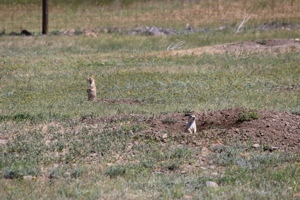 The town was just off the interstate but it didn’t seem to bother the dogs much. Very interesting but small and didn’t take too much time. It gave Scott a chance to experiment some more with the new camera, however. And both of us a chance to learn way more about prairie dogs than we ever knew before.
The town was just off the interstate but it didn’t seem to bother the dogs much. Very interesting but small and didn’t take too much time. It gave Scott a chance to experiment some more with the new camera, however. And both of us a chance to learn way more about prairie dogs than we ever knew before.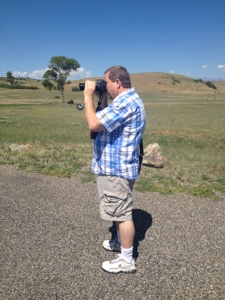
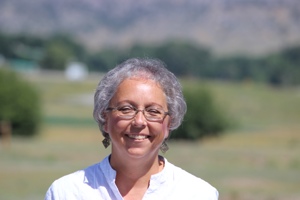
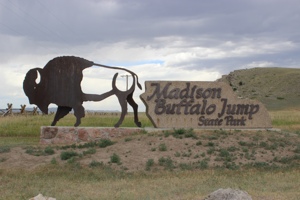 Next stop, Madison Buffalo Jump State Park which was interesting if somewhat primitive. We hiked up a short but steep trail to a pavilion with markers, looked at the face of the jump and read about teenage boys trained to be buffalo runners to lure the herd to the edge, jump to safety and then cling to a ledge as the animals fell over to their deaths. Sounds gory when I tell it like that.
Next stop, Madison Buffalo Jump State Park which was interesting if somewhat primitive. We hiked up a short but steep trail to a pavilion with markers, looked at the face of the jump and read about teenage boys trained to be buffalo runners to lure the herd to the edge, jump to safety and then cling to a ledge as the animals fell over to their deaths. Sounds gory when I tell it like that.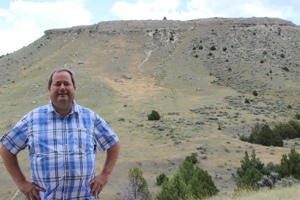
Back in the car to listen to “Harry Potter and the Goblet of Fire” and crochet while Scott drove us to Lewis & Clark Caverns State Park. We got there just as a tour was about to leave at 3:30 so we rushed to grab jackets and the camera and raced off to join the end of the line on the long climb up the mountain to the cave entrance. It was hot, somewhat steep, and I was pretty exhausted from the previous days’ activities, so it was a hard slog for me. We had neglected to grab water and I was dying of thirst while pushing myself up the trail. It was somewhat grueling. When we got to the cave entrance, blessed relief! It was cool! I was so hot that I didn’t put on my jacket until the very end of the tour-it took me that long to cool off. 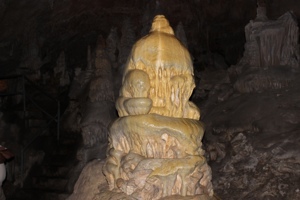 So, the caverns. Very interesting formations. We noticed at the beginning that many of the formations seemed broken off, then the guide told us why. In the early part of the twentieth century, an entrepreneur built a spiral staircase down into the caves and gave guided tours. He also allowed visitors to break off a piece of the formations by the entrance as a souvenir to take home. Since the formations at the entrance are not active, no new growth there forever.
So, the caverns. Very interesting formations. We noticed at the beginning that many of the formations seemed broken off, then the guide told us why. In the early part of the twentieth century, an entrepreneur built a spiral staircase down into the caves and gave guided tours. He also allowed visitors to break off a piece of the formations by the entrance as a souvenir to take home. Since the formations at the entrance are not active, no new growth there forever. 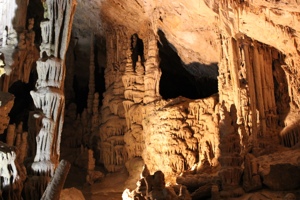 During the Depression the cave became part of the National Park Service and was developed by the Civilian Conservation Corps who replaced the wooden stairs with concrete and installed lighting. They blasted out a new exit so visitors didn’t have to go back the way they came and run into visitors coming down, and then found that it created a giant wind tunnel that was drying out the only live part of the caverns. So they built airtight doors at each end. When we left, we all got in the 500 ft. tunnel and the guide shut the “dungeon door” behind us. It made a loud bang and the vibrations moved right through us with a reverb all through our chests. Cool!
During the Depression the cave became part of the National Park Service and was developed by the Civilian Conservation Corps who replaced the wooden stairs with concrete and installed lighting. They blasted out a new exit so visitors didn’t have to go back the way they came and run into visitors coming down, and then found that it created a giant wind tunnel that was drying out the only live part of the caverns. So they built airtight doors at each end. When we left, we all got in the 500 ft. tunnel and the guide shut the “dungeon door” behind us. It made a loud bang and the vibrations moved right through us with a reverb all through our chests. Cool! 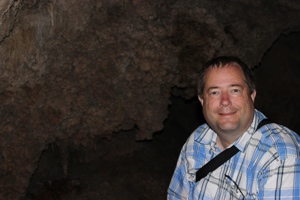 The NPS later gave the caverns to the state and it became Montana’s first state park. The first part of the cave had some nice formations that were mostly white but as we got deeper there was more color and more varied formations.
The NPS later gave the caverns to the state and it became Montana’s first state park. The first part of the cave had some nice formations that were mostly white but as we got deeper there was more color and more varied formations. 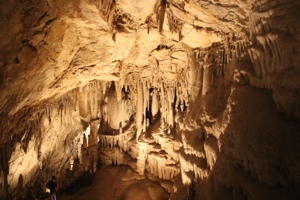 The entire tour is a two-mile trip which includes “some bending and stooping”, according to the signage. This is an understatement of the grossest proportions. We’ve toured some caves in our time and these were the tightest squeezes ever. “Bending” included completely over and still bumping our heads and backs. We also had to slide on our butts down the “beaver slide”, and walk backwards down some wedge-shaped steps so small our feet barely fit on them. So this trek is not for the faint of heart. But it was worth it.
The entire tour is a two-mile trip which includes “some bending and stooping”, according to the signage. This is an understatement of the grossest proportions. We’ve toured some caves in our time and these were the tightest squeezes ever. “Bending” included completely over and still bumping our heads and backs. We also had to slide on our butts down the “beaver slide”, and walk backwards down some wedge-shaped steps so small our feet barely fit on them. So this trek is not for the faint of heart. But it was worth it. 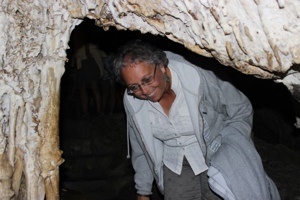 The second half had the more impressive formations and one section along an almost continuous long down stairway had many beautiful sights we all had to keep stopping to take pictures of for posterity.
The second half had the more impressive formations and one section along an almost continuous long down stairway had many beautiful sights we all had to keep stopping to take pictures of for posterity.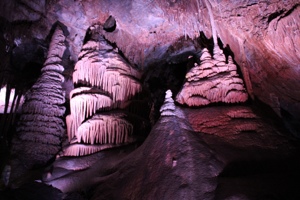
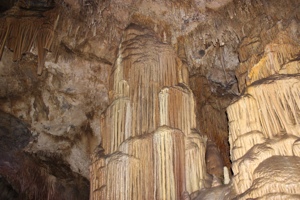 Because the tour descends inside the cave, when we exited the caverns we had a level trail back to the car. The view over the Jefferson River valley from the exit was lovely.
Because the tour descends inside the cave, when we exited the caverns we had a level trail back to the car. The view over the Jefferson River valley from the exit was lovely.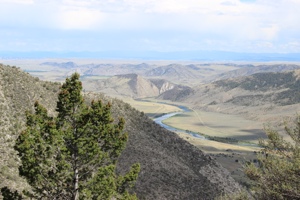
While passing Butte on the interstate, I happened to look up and see a statue on the top of a mountain. I made Scott take off at the next exit and go back so we could take pictures. She is called “Our Lady of the Rockies”, is 90 feet tall and stands on the Continental Divide at an elevation of over 8000 feet. She was built by volunteer labor and contributions and there is an interfaith chapel beside her. She is a tribute to the women of all nationalities and creeds who travelled through or settled this area and is an impressive sight from the ground. We circled back and stayed in Butte over a week later and pulled in at night. She is brightly lit and that was also impressive.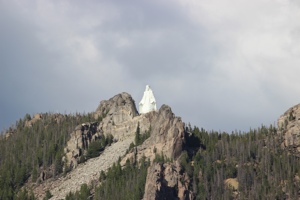

Leave a Reply